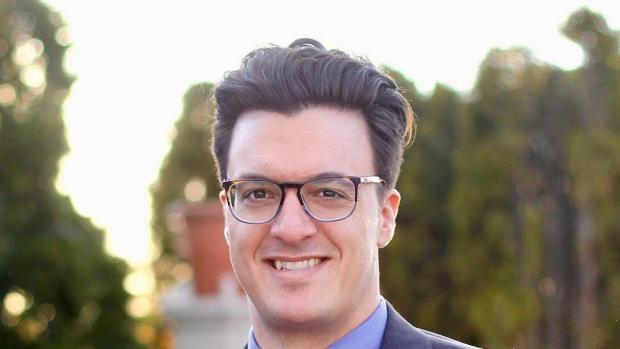Doctoral Student Combines Artificial Intelligence and Geotechnical Engineering in Award Winning Paper

NYU Tandon Ph.D. candidate Nick Machairas developed a new process for sorting through data about geotechnical engineering conditions.
When there is a database full of useful information, but it is too complicated to use practically, how can someone sort through the numbers to gain valuable insights? Even practicing civil engineers have trouble accessing and interpreting the enormous data sets they may need for a project. This is the issue NYU Tandon Ph.D. candidate, Nikolaos Machairas, along with co-authors, Gregory A. Highley and Tandon Professor Magued G. Iskander, sought to resolve in their paper “Evaluation of FHWA Pile Design Method Against the Deep Foundation Load Test Database.” The paper was recently reviewed by the Transportation Research Board’s Committee AFS30 (Foundations of Bridges and Other Structures) and was ranked highest amongst papers received this year, with TRB reviewers noting that it was the only paper designated as both award-caliber, and practice-ready.
The database scrutinized in the paper is the Federal Highway Administration (FHWA)’s Deep Foundation Load Test Database, which is used by engineers as a data repository for soil and load testing information to help design, construct, and maintain bridge foundations and highway infrastructure. However, the database’s structure and interface make it difficult to retrieve and use the information it stores. Machairas’s paper points out that because of the complicated nature of the database, no other studies have utilized the FHWA’s data. At the same time, if the data can be extracted and analyzed, it can give practicing engineers the tools to improve their understanding of pile performance. The study sets up a system for transferring data from the FHWA database to a format where it can be more easily organized and evaluated. This improved data management system, says Machairas, “will lead to design and construction of bridge foundations that are less costly, quicker to construct, and with less environmental impact.”
In addition to a better organizing data, Machairas’s study uses advanced data analytics, including data transformations, scrutinizes load test records, and batch-processes pile capacity calculations to provide standards for the design and construction of transportation systems and facilities. Using the systems developed in the paper, highway departments could assess specific pile types in specific soils. “This improved understanding of pile performance will result in cost savings as well as higher reliability of bridge foundations,” explains Machairas, noting that there will be improvements to how pile capacity is predicted in the near future, by making use of large datasets and probabilistic analyses.
Nick Machairas mentions that his interest in improving design methods comes from a combination of two interests, explaining that even though he is a Geotechnical Engineering Ph.D. candidate, he is also fascinated by computer science. “I have worked on various machine learning projects, some that involved ensemble methods for image analysis, both as a student and as a researcher,” he says, “Also, any code we write for our research, I aim to make available to the open-source community for anyone to use and contribute. This is practically unheard of in the geotechnical community but open-source development has been a catalyst for innovation in many fields, and I believe my industry can benefit from it as well.”
I have a very strong emotional attachment to NYU Tandon and all the people that make it the great school that it is. I attribute my becoming an engineer to the generous support and passionate guidance of my professors at NYU Tandon.”
— Nick Machairas
Machairas received his bachelor’s degree in Civil Engineering at Tandon in 2010, graduating magna cum laude.
Annie Brinich
NYU Tandon School of Engineering
Master of Science in Integrated Digital Media, Class of 2019




